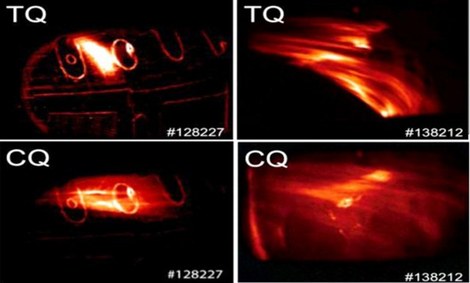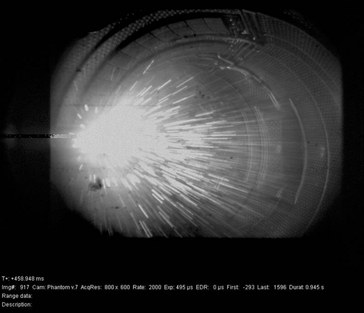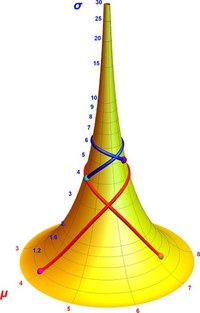Fusion Data Science
Click here for master thesis topics 2019-2020!
- Fusion Data Science
- Probabilistic characterization of stochastic plasma phenomena
- Plasma disruption prediction
- Development of fusion scaling laws
- Bayesian modeling of fusion diagnostics and Bayesian tomography
Fusion Data Science

ITER and future fusion reactors will be very complex machines that will rely heavily on advanced control systems. In turn, plasma control depends crucially on plasma diagnostics that are required to provide reliable measurements of key plasma parameters, which is an important challenge owing to the particularly harsh environment of fusion plasmas. In addition, there is still an important lack of understanding of various aspects of tokamak and stellarator physics, necessitating a data-driven approach in many cases. Probability theory and machine learning methods have a major role to play in plasma control and plasma diagnosis, in increasing the understanding of the physics of magnetized fusion plasmas and in designing new fusion machines. State-of-the-art techniques for studying and controlling stochastic plasma phenomena, for analyzing data patterns, for modeling error propagation and for integrated data analysis have been introduced in fusion science since the last 10-15 years. The research unit Nuclear Fusion has been involved in this domain since the start of this important new trend and we have acquired a strong expertise at the front of this domain, ranging over several research activities:
• Probabilistic characterization of stochastic plasma phenomena: edge-localized modes, disruptions and plasma turbulence
• Plasma disruption prediction
• Development of fusion scaling laws
• Bayesian modeling of fusion diagnostics and Bayesian tomography
A connecting thread throughout this research is our reliance on a probabilistic description of data using the Bayesian paradigm. The rationale is the high degree of uncertainty that often affects fusion diagnostic data. We treat the data distribution as a fundamental quantity on which all our methods are built. Hence, we employ and develop techniques that are specifically designed to handle highly stochastic data; i.e. that operate within probability spaces (spaces of probability distributions). For this we utilize a geometric framework called information geometry, which provides the mathematical tools to discriminate between different states of information and hence enables detection of data patterns in these probability spaces.
Our group offers master thesis and PhD topics each year. For more information, please contact prof. dr. Geert Verdoolaege (geert.verdoolaege@ugent.be). Below is a more detailed description of each of the current research topics. (back)
Probabilistic characterization of stochastic plasma phenomena
Many important phenomena in fusion plasmas exhibit a strongly stochastic character, i.e. they behave in a random and unpredictable way due to the complex underlying microscopic physics. Examples are edge-localized modes (ELMs), disruptions and plasma turbulence, all of which are presently insufficiently understood from the physical point of view, while posing many critical issues on the road towards a practical fusion reactor.
Understanding physical behavior begins with quantification and to quantify a stochastic phenomenon requires the methods of probability theory. We use a variety of probability distributions to model stochastic plasma quantities, in combination with a cutting-edge mathematical framework to describe and compare distributions. This is the framework of information geometry, wherein probability distributions are treated as points on a manifold, allowing measurement of the difference between distributions by means of a geodesic distance.
This research field is an exciting blend of plasma physics, probability theory and differential geometry, offering unparalleled new insights into the complex physics of fusion plasmas and in information theory.
Plasma disruption prediction
Plasma disruptions are major instabilities causing excessive thermal loads and large transient forces that are dangerous to the operation of a tokamak and that will have to be avoided and mitigated in ITER. Disruptions can be caused by various complex mechanisms and it is very important to be able to predict them in real time and to recognize the disruption cause. We have recently developed a disruption classifier based on the discrimination of the distribution of wavelet coefficients corresponding to several predictor signals. We are also working on a reliable discrimination between different disruption types. In addition, research is ongoing in collaboration with ITER to establish a new set of predictor quantities (features) with a clear link to disruption physics and minimal dependence on machine characteristics. (back)
Development of fusion scaling laws
Scaling laws provide crucial information for the design specifications of next-step fusion devices such as ITER. They enable extrapolation of various plasma characteristics and performance measures from measurements assembled in international multi-machine databases. On the other hand, regression analysis is a ubiquitous instrument for exploration and characterization of relations between physical quantities. We have developed a new regression technique, called geodesic least squares (GLS), designed to handle significant uncertainty on the data and the regression model. It is based on minimization of the geodesic distance between the measured and predicted probability distribution of the response variable. With this technique we are contributing to the revision of historical multi-machine scaling laws for the energy confinement and the power threshold for the L-H transition. Other applications include modeling of the dependencies of intrinsic plasma rotation, ELM heat loads and width of the scrape-off layer. (back)
Bayesian modeling of fusion diagnostics and Bayesian tomography
This research is among the core activities of the group since 2002. It concerns application of Bayesian probability theory (BPT) to modeling of fusion diagnostics in order to reduce uncertainties on derived physical quantities, combine data from various diagnostics and solve the notoriously difficult tomography problem for reconstruction of local plasma quantities. We work on charge exchange spectroscopy (CXS) with a view to the ITER core CXS system, reflectometry for density profile reconstruction and turbulence studies, and soft-X-ray spectroscopy (SXR) for real-time reconstruction of impurity concentrations and MHD mode activity. In the case of SXR, the local emissivity field is reconstructed by means of a Gaussian process method, enabling real-time capabilities for use in plasma control. (back)




